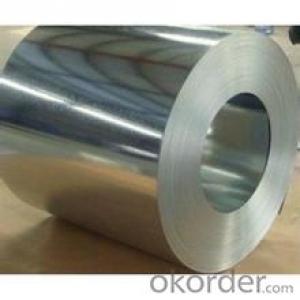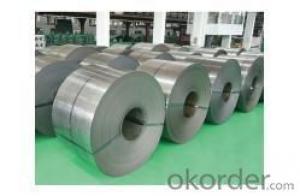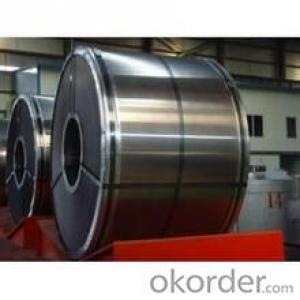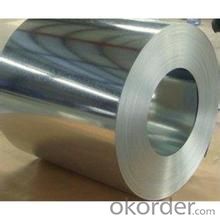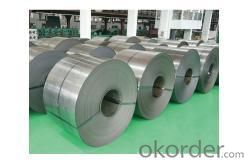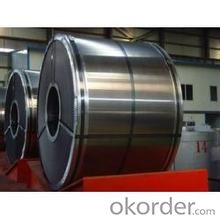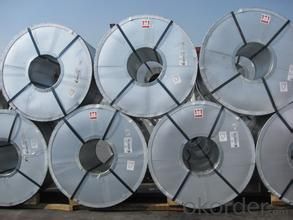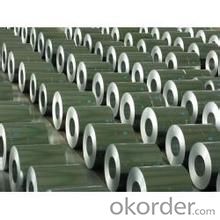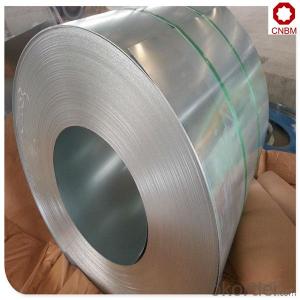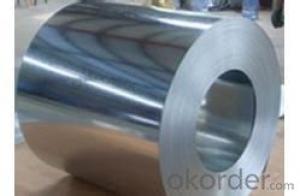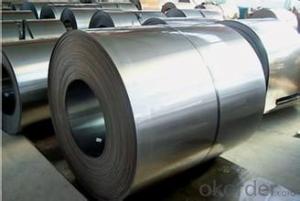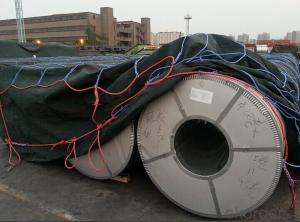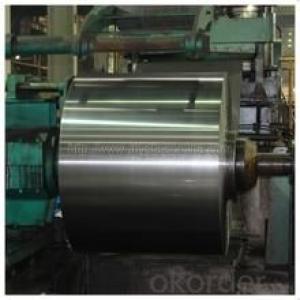Excellent Hot-Dip Galvanized/ Aluzinc Steel SGCC
- Loading Port:
- China main port
- Payment Terms:
- TT OR LC
- Min Order Qty:
- 30 m.t.
- Supply Capability:
- 5000000 m.t./month
OKorder Service Pledge
OKorder Financial Service
You Might Also Like
Description of Galvalume Coil:
Hot-dip galvanized steel coils are available with a pure zinc coating through the hot-dip galvanizing process. It offers the economy, strength and formability of steel combined with the corrosion resistance of zinc. The hot-dip process is the process by which steel gets coated in layers of zinc to protect against rust. It is especially useful for countless outdoor and industrial applications.
Specification of Galvalume Coil:
1.Mateials:SGCC,DX51D / DX52D /S250,280GD
2.Size:width:600-1250mm(900mm,1215mm,1250mm,1000mm the most common)
thickness:0.15-2.0mm
length:1000-6000mm,as your require
3.Zinc coating :60-180g( as required)
4.Coil id:508mm
5.Coil weight: 3-5MT(as required)
6. Surface:regular/mini/zero spangle, chromated, skin pass, dry etc.
Applications of Galvalume Coil:
1. roofing
2. gutters
3. unexposed automotive parts
4. appliances
5. furniture
6. outdoor cabinetry
Images of Galvalume Coil:
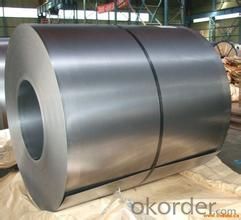
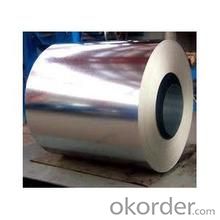
We sincerely hope to establish good and long-term business relationship with your esteemed company.
- Q: What are the different types of steel coil surface treatments for indoor applications?
- The different types of steel coil surface treatments for indoor applications include hot-dip galvanizing, electro-galvanizing, and organic coating.
- Q: What is galvanized steel coil?
- Galvanized steel coil is a type of steel that has been coated with a layer of zinc to protect it from corrosion. The process of galvanization involves immersing the steel coil in a bath of molten zinc, which forms a protective layer on the surface of the steel. This layer not only prevents corrosion but also provides a barrier against scratches and other damage. Galvanized steel coil is commonly used in various industries, including construction, automotive, and manufacturing, due to its durability and resistance to rust. It is often used for making roofing materials, pipes, and automotive parts, among other applications. Overall, galvanized steel coil is a versatile and cost-effective solution for ensuring the longevity and integrity of steel products.
- Q: How do steel coils contribute to the automotive industry?
- The automotive industry heavily relies on steel coils to manufacture different components and structures for vehicles. These coils are made from high-quality steel and undergo a series of processes, such as hot rolling, cold rolling, and annealing, to achieve the desired properties. One of the main applications of steel coils in the automotive industry is for producing body panels and frames. The strength and durability of steel make it an ideal material for these purposes, providing structural integrity and protection to the vehicle. Through a stamping process, steel coils are transformed into sheets, allowing manufacturers to create intricate shapes and designs for various vehicle models. Furthermore, steel coils are also utilized in the production of suspension systems, including springs and shock absorbers. The elasticity and resilience of steel enable these components to withstand the constant impact and weight of the vehicle, ensuring optimal performance and comfort for the driver and passengers. In addition, engine components like crankshafts, camshafts, and cylinder heads are manufactured using steel coils. These components require the strength and thermal resistance that steel provides, ensuring the efficient operation and longevity of the engine. Moreover, steel coils play a crucial role in the production of exhaust systems, which are essential for reducing emissions and noise levels. Steel's resistance to heat and corrosion make it an excellent material choice for exhaust pipes, mufflers, and catalytic converters, ensuring their durability and functionality. Overall, steel coils are indispensable in the automotive industry as they contribute to the manufacturing of various components and structures that are vital for the performance, safety, and longevity of vehicles. The high strength, durability, and versatility of steel make it the preferred material choice, enabling manufacturers to create reliable and efficient automobiles.
- Q: How are steel coils used in the production of industrial boilers?
- Steel coils are used in the production of industrial boilers to form the main body and components of the boiler, such as the shell, tubes, and headers. The coils are shaped and welded together to create a strong and durable structure that can withstand high pressure and temperature conditions. Additionally, the use of steel coils ensures the boiler's efficiency and longevity, as steel is known for its excellent heat transfer properties and resistance to corrosion.
- Q: How does stainless steel soap work? I have read the detailed explanation on Wikipedia, but their desciption seems skeptical on the actual chemical process that may take place from using such an item. Is there an actual scientific explanation to how stainless steel soap is able to clean your hands, when it is only a piece of metal?
- Many metals have germicidal qualities. Silver is the strongest germicide of the metals, but a sterling silver bar of soap would be expensive and it would tarnish. The tarnish would actually not affect the silver's ability to kill bacteria, but it would look bad and the tarnish would turn your hands black, so people wouldn't want to use it. Many people even take silver internally in the form of Colloidal Silver, but Colloidal Silver is very controversial. Yes, it kills many bacteria, but it can also cause a person's skin to permanently turn blue...a condition called Argyria. Brass actually is a better germicide than stainless steel...but again this is a cosmetic problem. Brass tarnishes, so people wouldn't want to use it. Stainless steel is actually a very weak germicide, but even steel has some ability to kill germs. Stainless steel also removes fish odor. My son has a stainless steel bar that he takes along when he fishes to remove the fish smell from his hands. There's nothing magical about the bar...a stainless steel spatula would would just as well, but the bar is more convenient to carry. I'm not sure if this is scientific enough or not. -
- Q: How do steel coil manufacturers contribute to local economies?
- Steel coil manufacturers contribute to local economies in several ways. Firstly, they create employment opportunities by hiring a significant number of workers, thereby reducing unemployment rates and improving the standard of living in the community. These jobs often include a range of skill levels, from entry-level positions to highly specialized roles, providing a diverse range of employment options for locals. Additionally, steel coil manufacturers contribute to the local economy through their supply chain. They typically rely on local suppliers for raw materials, transportation services, and various support services, fostering business relationships and boosting the local economy. This leads to increased revenue for these suppliers and stimulates economic growth in the region. Moreover, the presence of steel coil manufacturers can attract other businesses to the area, such as logistics companies, distributors, and machine shops, which further enhances the local economy. This expansion of the industrial sector can result in a multiplier effect, generating additional job opportunities and attracting investment from outside the community. Lastly, steel coil manufacturers often engage in corporate social responsibility initiatives, such as supporting local charities, sponsoring community events, or investing in infrastructure development. These contributions not only have a positive social impact but also contribute to the overall economic development and well-being of the local community. In summary, steel coil manufacturers play a crucial role in local economies by creating jobs, stimulating the supply chain, attracting businesses, and investing in community development, all of which contribute to the growth and prosperity of the region.
- Q: What are the dimensions of steel coils used in the packaging industry?
- The dimensions of steel coils used in the packaging industry can vary depending on the specific application and requirements. However, typical dimensions for steel coils used in packaging range from 0.15 mm to 3 mm in thickness and 600 mm to 2000 mm in width. The inner diameter of the coil, known as the core, is usually around 508 mm (20 inches), although other sizes such as 610 mm (24 inches) or 762 mm (30 inches) may also be used. The outer diameter of the coil can vary depending on the weight and size of the coil, but it is commonly around 1000 mm to 2000 mm. It is important to note that these dimensions can be customized based on the specific requirements and preferences of the packaging industry.
- Q: What are the challenges in coil edge trimming for narrow strips?
- There are several challenges in coil edge trimming for narrow strips. Firstly, one of the main challenges is maintaining accuracy and precision during the trimming process. Narrow strips require a high level of precision to ensure that the edges are trimmed evenly and smoothly. Any deviation from this precision can result in uneven edges or burrs, which can affect the overall quality of the strip. Secondly, there is the challenge of controlling the strip tension. Narrow strips are more prone to tension issues, as they have less surface area to distribute the tension evenly. This can lead to problems such as strip breakage or stretching, which can impact the final product's quality. Another challenge is avoiding material waste. Narrow strips often have a smaller margin for error, meaning that any mistakes in the trimming process can result in a significant amount of wasted material. Minimizing material waste is crucial for cost-effectiveness and sustainable manufacturing practices. Additionally, maintaining a high production rate can be challenging when working with narrow strips. The trimming equipment needs to be able to handle the high speed required for efficient production while still maintaining accuracy and precision. This requires the use of advanced machinery and technology to ensure smooth and efficient operations. Lastly, the handling and transportation of narrow strips can also pose challenges. Due to their small size, narrow strips are more susceptible to damage during handling and transportation. Proper care and handling techniques need to be implemented to prevent any potential damage, which could affect the quality of the final product. Overall, the challenges in coil edge trimming for narrow strips revolve around precision, tension control, material waste, production rate, and handling. Overcoming these challenges requires the use of advanced technology, skilled operators, and careful attention to detail throughout the entire process.
- Q: My mother is in a weilding class, and today she accidentally welded Galvanized Steel. She doesn't feel good and she wants to know what the symptoms are for Galvanized Poisoning from breathing in the Fumes. Please help, I am worried for her.
- Galvanized steel is nothing more than regular steel with zinc added. However, unless you wear the proper gear or ventilate the fumes away, the zinc can cause heavy metal poisoning. As someone who has suffered from it before, usually the symptoms are an upset stomach, feeling queasy, diarrhea, and sometimes hallucinations. If it is bad, you start getting joint pain, a metallic taste in your mouth, and develop a fever. Usually, you can treat mild zinc poisoning by drinking lots of fluids and flushing out your system as much as possible. Still, if the problems persist for more than an hour or so, it can be lethal with many blacksmiths having died as a result of it. If she still feels bad, call a poison control center and tell them she breathed in zinc fumes. They will probably tell you to go to the ER to start treatment. It is not something you wait out.
- Q: How are steel tape measures installed?
- Today, I met similar situations at work! Accidentally pull the head, and then automatically can not go back, after opening, winding, after installation, can not automatically withdraw! After a long time, we suddenly noticed that we neglected a small place!
Send your message to us
Excellent Hot-Dip Galvanized/ Aluzinc Steel SGCC
- Loading Port:
- China main port
- Payment Terms:
- TT OR LC
- Min Order Qty:
- 30 m.t.
- Supply Capability:
- 5000000 m.t./month
OKorder Service Pledge
OKorder Financial Service
Similar products
Hot products
Hot Searches
Related keywords
